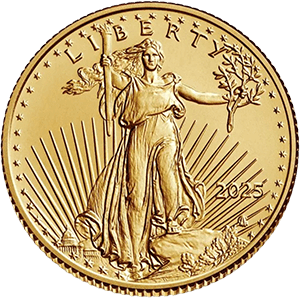With inflation concerns and market volatility making headlines, many investors are taking a fresh look at precious metals for their retirement portfolios. Gold IRAs have gained popularity as a way to add physical precious metals to retirement savings, but they come with distinct advantages and drawbacks worth understanding before you invest.
This guide breaks down the essential gold IRA pros and cons to help you determine if this investment option aligns with your retirement goals. We'll examine how these specialized accounts work, their potential benefits for portfolio diversification, and the important limitations you should consider before opening an account.
Key Takeaways
-
Gold IRAs allow you to hold physical precious metals in a tax-advantaged retirement account
-
Primary benefits include portfolio diversification, inflation protection, and crisis hedging
-
Major drawbacks include high fees, no income generation, and limited liquidity
-
Most financial advisors recommend limiting precious metals to 5-15% of your portfolio
-
Consider alternatives like gold ETFs for lower-cost exposure to precious metals
What Is a Gold IRA
A Gold IRA is a self-directed Individual Retirement Account that allows you to hold physical precious metals like gold, silver, platinum, and palladium instead of traditional paper assets. These accounts follow the same basic tax rules as conventional IRAs but give you the ability to own physical bullion and coins within your retirement portfolio.
Gold IRAs come in both Traditional and Roth varieties. With a Traditional Gold IRA, contributions may be tax-deductible, but withdrawals during retirement are taxed as income. Roth Gold IRAs offer tax-free withdrawals in retirement, but contributions are made with after-tax dollars.
The IRS maintains strict requirements about which precious metals qualify for inclusion in these accounts. Gold must be 99.5% pure, while silver must be 99.9% pure. Platinum and palladium must both meet 99.95% purity standards.
How Gold IRAs Work
Setting up a Gold IRA requires working with specialized companies that handle the unique requirements of precious metals retirement accounts:
-
Custodian selection: You must work with an IRS-approved custodian who specializes in self-directed IRAs with precious metals capabilities.
-
Account funding: You can fund your Gold IRA through a rollover from an existing retirement account, a transfer, or annual contributions (subject to IRS limits).
-
Metal selection: You choose IRS-approved precious metals for purchase through your custodian.
-
Secure storage: The IRS requires that your precious metals be stored in an approved depository—you cannot take personal possession of the metals while they remain in your IRA.
-
Account management: Your custodian handles paperwork, reporting, and facilitates purchases and sales.
The annual contribution limits for Gold IRAs match those of traditional IRAs ($7,000 for 2024, with an additional $1,000 catch-up contribution for those 50 and older).
Gold IRA Pros: Potential Benefits
Portfolio Diversification
Gold often moves independently of stocks and bonds, potentially reducing overall portfolio volatility. During the 2008 financial crisis, the S&P 500 fell approximately 38%, while gold prices rose about 5%. This negative correlation can help balance portfolio performance during market downturns.
Financial advisors typically recommend allocating 5-15% of a retirement portfolio to precious metals, depending on your risk tolerance and time horizon.
Inflation Protection
Gold has historically maintained purchasing power over long periods. While the dollar has lost over 85% of its purchasing power since 1971, gold has increased in value, outpacing inflation during many periods.
During the high inflation years of the late 1970s, gold prices rose from $135 per ounce in 1976 to over $800 by 1980, providing a hedge against the eroding value of cash savings.
Protection During Economic Uncertainty
Gold prices often rise during periods of economic stress or geopolitical tension. For example, during the COVID-19 market crash in March 2020, gold initially dropped but quickly recovered and reached all-time highs later that year, while many stocks remained volatile.
This tendency to perform well during crises makes gold attractive as a form of "insurance" within a retirement portfolio.
Tax Benefits
Gold IRAs offer the same tax advantages as traditional retirement accounts. With a Traditional Gold IRA, you can defer taxes until retirement, potentially when you're in a lower tax bracket. Roth Gold IRAs offer tax-free growth and withdrawals if you meet holding requirements.
These tax benefits can be significant compared to owning physical gold outside an IRA, where gains are taxed at the higher collectibles rate (maximum 28%) rather than standard capital gains rates.
Physical Asset Ownership
Unlike paper investments or ETFs, a Gold IRA gives you ownership of actual physical precious metals. This protects against counterparty risk—the possibility that a financial institution could default or fail.
Physical gold can't be created out of thin air like currency, and it has maintained value for thousands of years across civilizations.
Gold IRA Cons: Important Drawbacks
Higher Costs and Fees
Gold IRAs typically involve several layers of fees that can significantly impact returns:
-
Setup fees: $50-$300 to establish the account
-
Annual custodian fees: $75-$300 for account maintenance
-
Storage and insurance fees: $100-$300 annually
-
Seller's premium: 5-10% above the spot price when purchasing metals
-
Liquidation fees: Potential charges when selling metals
These combined costs are substantially higher than those associated with standard IRAs or precious metals ETFs, which might charge annual expense ratios of just 0.25-0.50%.
No Income Generation
Unlike dividend-paying stocks or interest-bearing bonds, physical gold produces no income. Your returns depend entirely on price appreciation, which means your investment doesn't compound through reinvested dividends or interest.
This lack of income can be particularly problematic for retirees who need their investments to generate cash flow for living expenses.
Price Volatility
While gold is often viewed as a stable asset, its price can experience significant short-term fluctuations. For example, after reaching a high of over $1,900 per ounce in 2011, gold prices fell to around $1,050 by late 2015—a decline of nearly 45%.
This volatility can create challenges for investors who need to liquidate their holdings at a specific time, such as at the beginning of retirement.
Limited Liquidity
Converting Gold IRA assets to cash involves multiple steps and can take longer than selling stocks or bonds. The process typically requires:
-
Contacting your custodian to initiate the sale
-
Having the metals transported from the depository to a dealer
-
Negotiating the sale price (which may be below the spot price)
-
Waiting for funds to be transferred to your account
This process can take several days to complete, which could be problematic in emergencies.
Storage Requirements and Access Restrictions
The IRS requires that Gold IRA assets be held by an approved custodian in an IRS-approved depository. You cannot take personal possession of the metals while they remain in your IRA.
Some companies market "home storage" Gold IRAs, but these arrangements typically violate IRS regulations and could result in taxes and penalties if audited. The IRS has successfully challenged such arrangements in tax court.
Who Should You Consider a Gold IRA?
Age and Retirement Timeline Considerations
-
Near-retirement investors (55+): May benefit from gold's stability as they approach retirement
-
Mid-career professionals (40-55): Might consider a moderate allocation as part of a diversified strategy
-
Younger investors (under 40): Generally better served by growth-oriented investments with longer time horizons
Risk Tolerance
Gold IRAs tend to be most appropriate for conservative to moderate investors who prioritize wealth preservation over aggressive growth. If you lose sleep over market volatility, a modest gold allocation might provide peace of mind.
Financial Situation
Gold IRAs make the most sense for investors who:
-
Have substantial retirement savings ($250,000+)
-
Have already maxed out traditional retirement accounts
-
Can afford the higher fees without significantly impacting returns
-
Have a diversified portfolio of other assets
Who Should Avoid Gold IRAs
-
Investors with limited retirement savings who need maximum growth
-
Those who need income-producing investments
-
Investors who can't afford the higher fees
-
People who need quick access to their funds
How to Open a Gold IRA
-
Selecting a Reputable Company
Look for Gold IRA investment companies with:
-
5+ years in business
-
A+ BBB rating
-
Transparent fee structures
-
Positive customer reviews across multiple platforms
-
Clear educational resources
-
No high-pressure sales tactics
2. Account Setup Process
-
Complete an application with your chosen custodian
-
Fund your account through rollover, transfer, or contribution
-
Select your precious metals
-
Confirm storage arrangements
-
Receive account statements and verification
3. Funding Options
-
Direct transfer: Moving funds directly from one custodian to another
-
Rollover: Taking distribution from an existing retirement account and depositing it into your Gold IRA within 60 days
-
Annual contributions: Adding new funds up to IRS limits
4. Common Mistakes to Avoid
-
Falling for "home storage" schemes
-
Buying collector coins with high premiums
-
Failing to understand the fee structure
-
Not verifying the reputation of the gold dealer
-
Making emotional decisions based on fear marketing
Gold IRA Alternatives to Consider
Gold ETFs and Mutual Funds
Gold ETFs like SPDR Gold Shares (GLD) offer exposure to gold prices without the hassle of physical ownership. Benefits include:
-
Lower expense ratios (typically 0.25-0.50% annually)
-
Greater liquidity
-
No storage concerns
-
Easier to buy and sell in small amounts
Mining Stocks and Funds
Gold mining companies can offer leverage to gold prices, potentially delivering higher returns when gold rises. Options include:
-
Individual mining stocks
-
Mining ETFs like VanEck Gold Miners ETF (GDX)
-
Royalty and streaming companies
Other Inflation Hedges
-
Treasury Inflation-Protected Securities (TIPS)
-
Real estate investments
-
Broad commodity funds
-
I-Bonds
Expert Advice
Financial advisors generally recommend moderation when it comes to gold allocation. Christine Benz, Morningstar's director of personal finance, suggests: "Limit precious metals exposure to 5-10% of your portfolio. They can serve as a portfolio diversifier and inflation hedge, but their long-term returns have historically lagged stocks and bonds."
Are Gold IRAs Worth It?
Gold IRAs offer unique benefits for certain investors, particularly those concerned about inflation, currency devaluation, or seeking portfolio diversification. The physical ownership aspect provides peace of mind to those worried about systemic financial risks.
However, the higher costs, lack of income, and liquidity limitations make them unsuitable as a primary retirement vehicle. For most investors, a small allocation to gold through more cost-effective vehicles like ETFs may provide similar diversification benefits without the drawbacks of a full Gold IRA.
Before opening a Gold IRA, consult with a gold IRA advisor who can evaluate how it fits within your overall retirement strategy. Remember that gold should complement—not replace—a well-diversified portfolio of stocks, bonds, and other assets tailored to your specific goals and risk tolerance.


